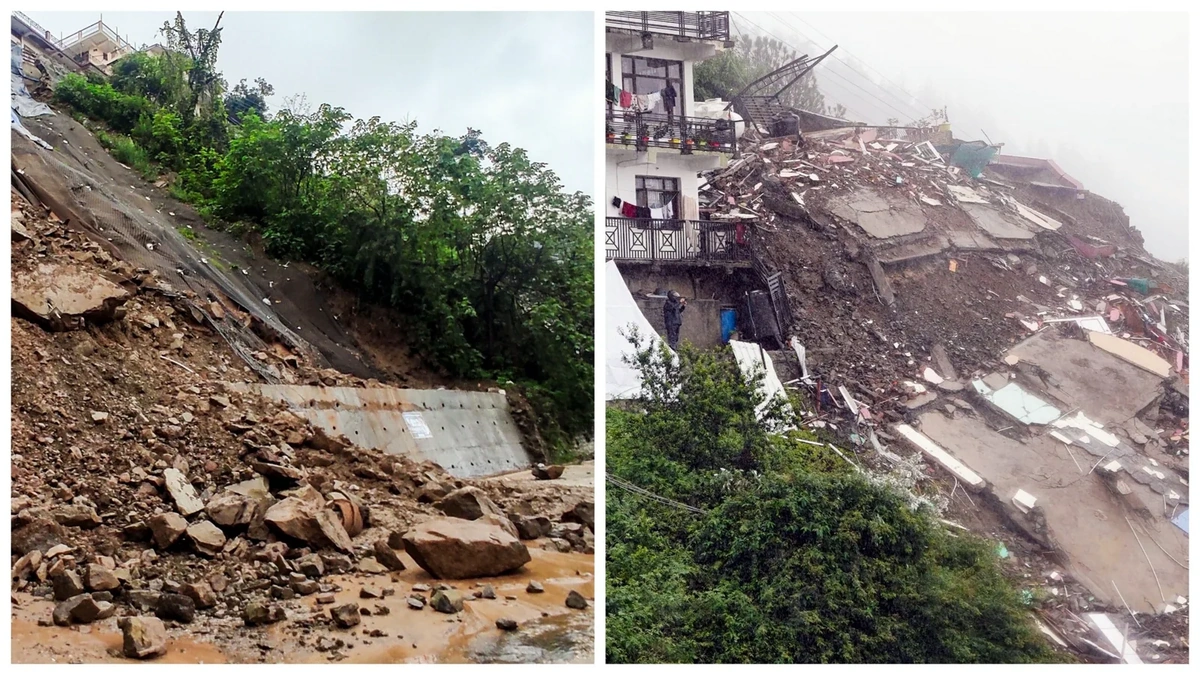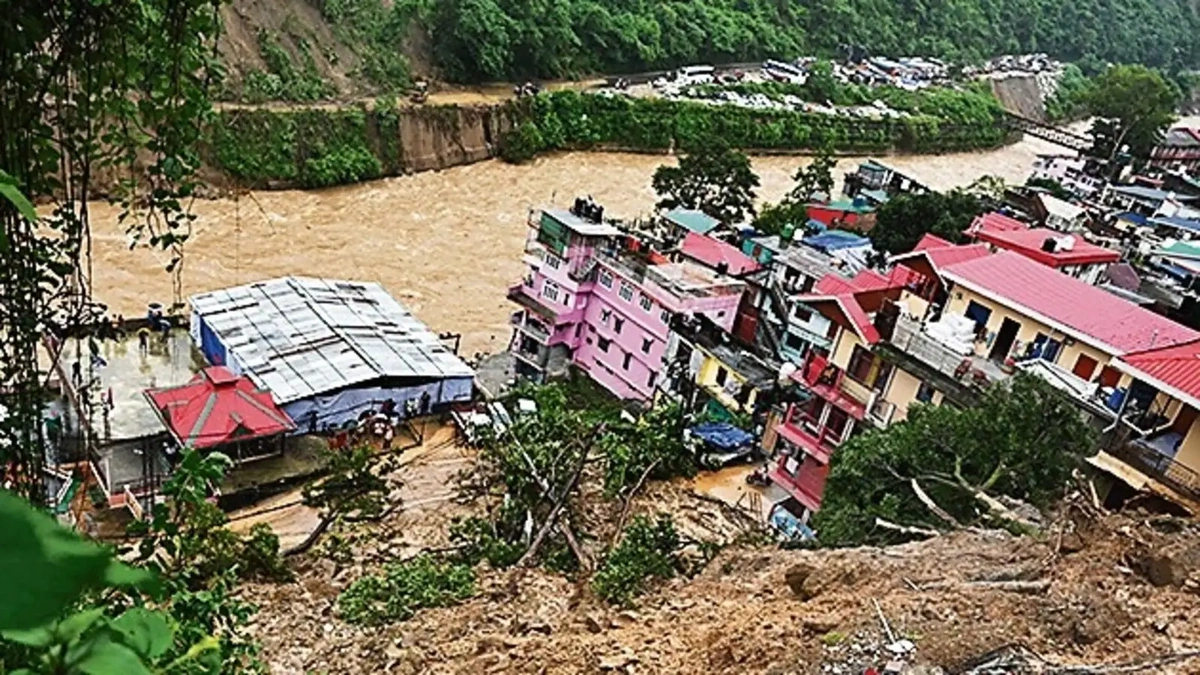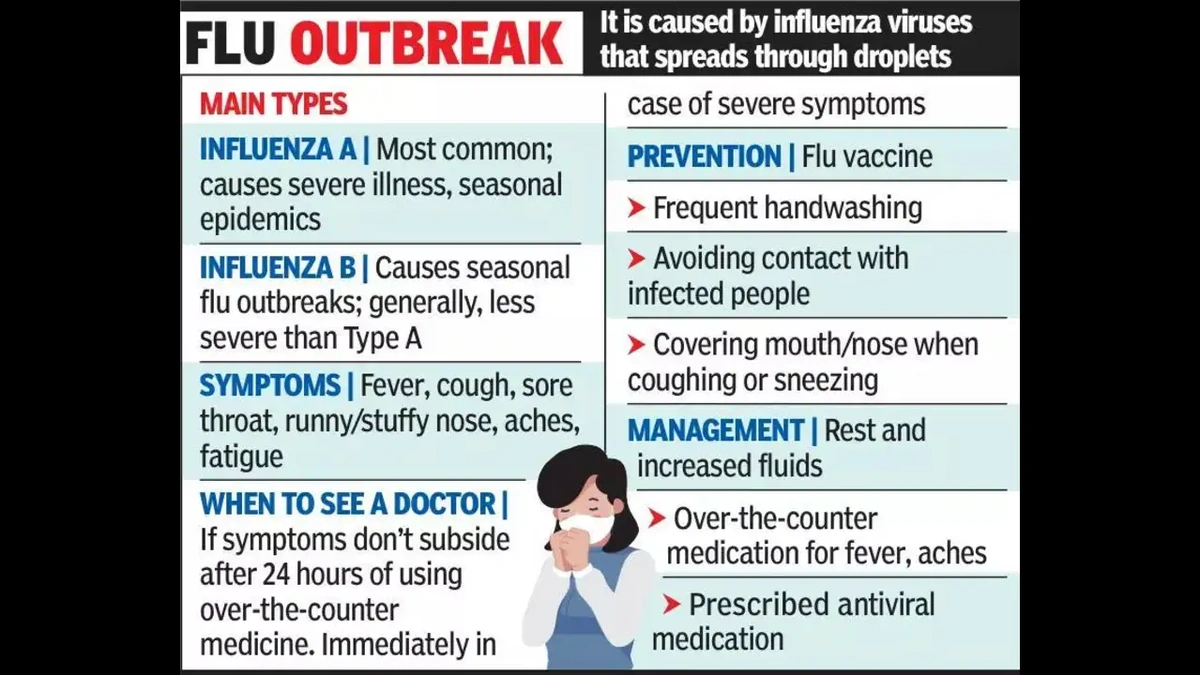At Least 15 Dead in Massive Himachal Pradesh Landslide; Rescue Efforts Underway
The news is heartbreaking, isn’t it? At least 15 lives lost in a massive Himachal Pradesh landslide . Rescue efforts are underway, and the images coming out are devastating. But the news reports, while important, often leave us wondering: why does this keep happening? What’s really going on beyond the headlines? This isn’t just about a tragic event; it’s about understanding the bigger picture of geological instability in the Himalayas and the human impact on this fragile ecosystem.
Let’s be honest: it’s easy to see a headline and move on. But these landslides, especially in Himachal Pradesh, are becoming alarmingly frequent. The question isn’t just “what happened?” but “ why is this happening with such increasing regularity?”
The Fragile Himalayas | A Recipe for Disaster

Here’s the thing: the Himalayas are young mountains, geologically speaking. They’re still rising, still shifting, and inherently unstable. Add to that a cocktail of factors like heavy rainfall, deforestation, and, critically, poorly planned construction, and you’ve got a recipe for disaster. What fascinates me is how these factors intertwine.
Climate change is playing a massive role, of course. We are seeing much more erratic and intense rainfall patterns. Cloudbursts, like the one that likely triggered this recent landslide, are becoming more common. These deluges saturate the soil, making it heavy and prone to collapse. The impacts of these storms can be devastating.
But it’s not just climate change. Deforestation weakens the soil structure, removing the natural anchors that hold the land together. And the rampant, often unregulated, construction of roads, dams, and buildings further destabilizes the slopes. Think of it like this: the mountains are already under stress, and we’re piling on more and more weight without reinforcing the foundation.
Human Impact | Are We Contributing to Our Own Misfortune?
Let me rephrase that for clarity: we are contributing to our own misfortune. I initially thought this was straightforward, but then I realized just how complex the issue is. The need for development – better roads, more infrastructure – is undeniable. But the way we’re going about it often exacerbates the problem.
Take road construction, for example. Blasting through mountains to create roads can weaken the surrounding rock formations. The debris from these blasts often ends up further destabilizing slopes downstream. And while building codes exist, enforcement is often lax, leading to shoddy construction practices that can’t withstand the region’s harsh conditions. We see this problem all over the Himalayan region . This leads to issues like soil erosion and adds to the possibility of future incidents.
What fascinates me is the interplay between short-term economic gains and long-term environmental consequences. We need to find a way to balance development with sustainability – to build infrastructure that doesn’t come at the cost of lives and environmental destruction.
Beyond the Rescue | What Needs to Change?
Of course, in the immediate aftermath of a landslide, the focus is rightly on rescue and relief efforts. Getting people to safety, providing medical care, and ensuring access to food and shelter are paramount. But once the immediate crisis has passed, it’s crucial to look ahead and ask: what can we do to prevent this from happening again? After all, the people need disaster preparedness .
The answer, unfortunately, isn’t simple. It requires a multi-pronged approach that involves better land-use planning, stricter enforcement of building codes, reforestation efforts, and, crucially, greater awareness among local communities about the risks of landslides. Awareness and education are extremely important in these situations.
For example, one thing I believe in is promoting sustainable tourism. The temptation to build huge hotels to cater to the ever-increasing number of tourists has to be curbed. We should encourage eco-friendly tourism that minimizes the impact on the environment. This also means investing in better drainage systems to manage rainwater runoff and prevent soil saturation.
The Role of Technology | Early Warning Systems and Mitigation
What fascinates me is the potential of technology to mitigate the risks of landslides. Early warning systems that use sensors to monitor soil moisture and ground movement can provide valuable time to evacuate vulnerable areas before a disaster strikes. And advanced mapping techniques can help identify areas that are particularly prone to landslides, allowing for better land-use planning and targeted mitigation measures.
The government needs to invest in these technologies and work with local communities to implement them effectively. This isn’t just about buying fancy equipment; it’s about building capacity and ensuring that the technology is used in a way that benefits the people who are most at risk.
Looking Ahead | A Call for Action
Let’s be honest: the challenges are immense. The Himalayas are a complex and dynamic environment, and there are no easy solutions. But inaction is not an option. The increasing frequency and intensity of landslides in Himachal Pradesh are a wake-up call. The recent incidents of landslide fatalities shows this is a wake up call.
We need to move beyond the cycle of disaster and response and start thinking proactively about how to manage the risks of landslides. This requires a collective effort from governments, scientists, local communities, and, yes, even tourists. It requires a willingness to prioritize long-term sustainability over short-term gains. And it requires a fundamental shift in our relationship with the mountains – a shift from exploitation to stewardship.
FAQ
What causes landslides in Himachal Pradesh?
A combination of factors including heavy rainfall, deforestation, geological instability, and unplanned construction.
How can I stay safe during a landslide?
Evacuate immediately if you notice signs of instability, such as cracks in the ground or unusual sounds.
What is the government doing to prevent landslides?
The government is implementing various measures, including land-use planning, building code enforcement, and reforestation efforts. However, more needs to be done.
What can I do to help?
Support sustainable tourism, advocate for responsible development, and educate yourself and others about the risks of landslides.
Where can I find reliable information about landslide risks?
Check with local government agencies and disaster management organizations for the most up-to-date information.
This isn’t just about saving lives; it’s about preserving the natural beauty of the Himalayas for future generations. And that, I believe, is a cause worth fighting for.













